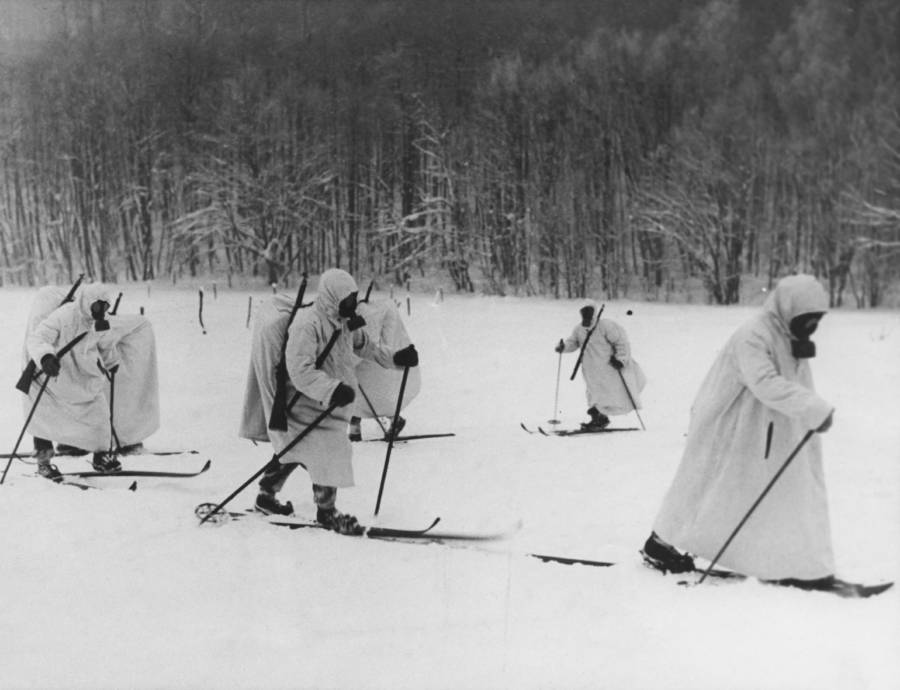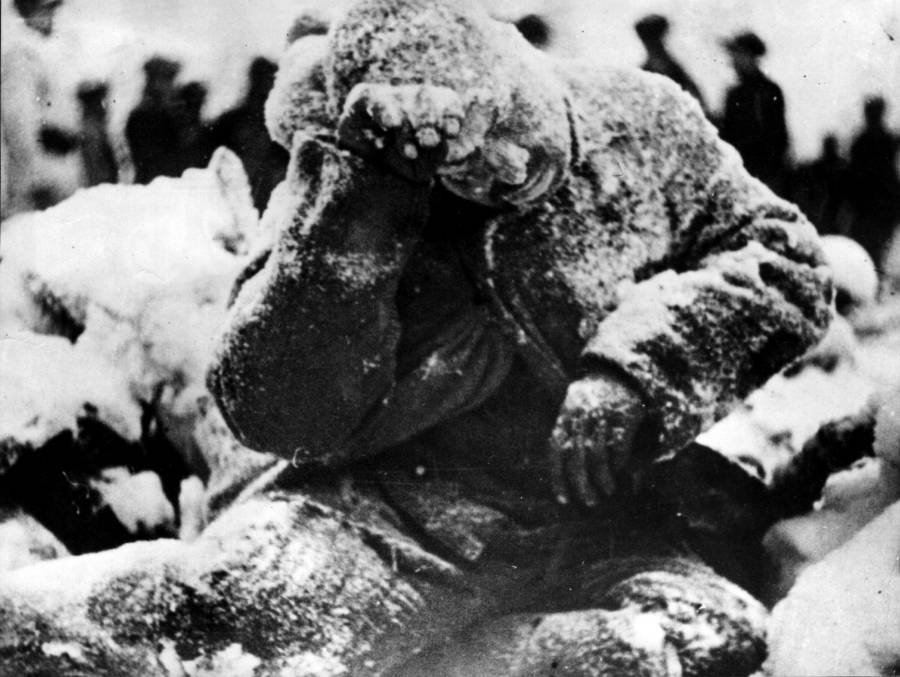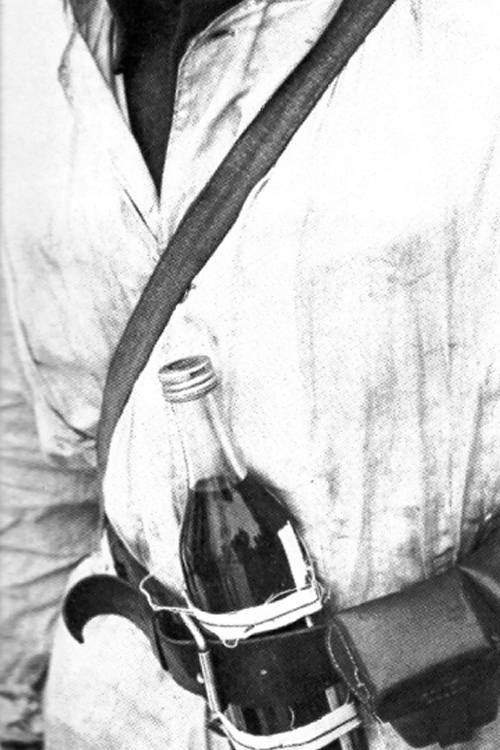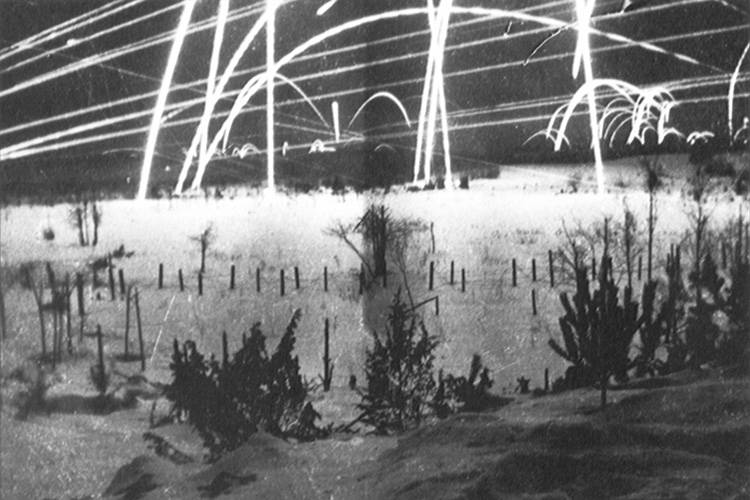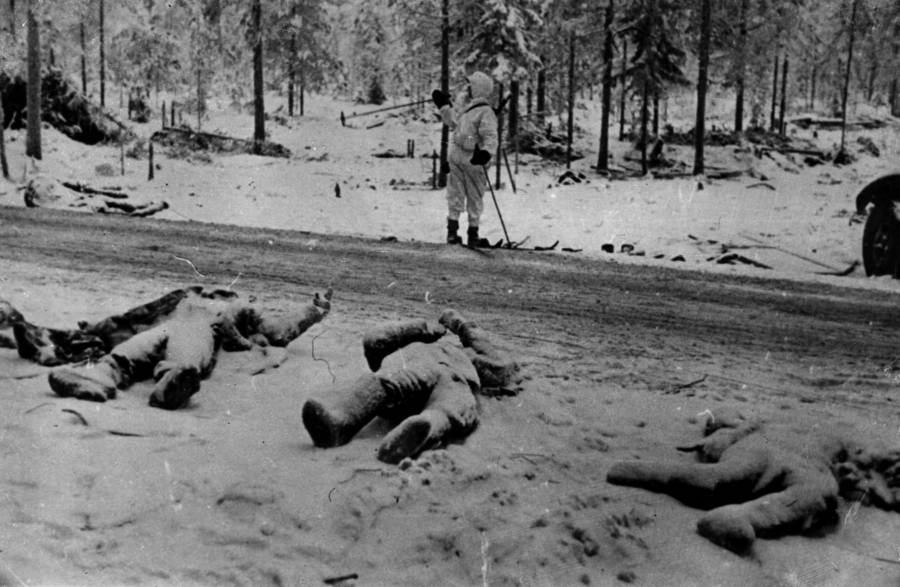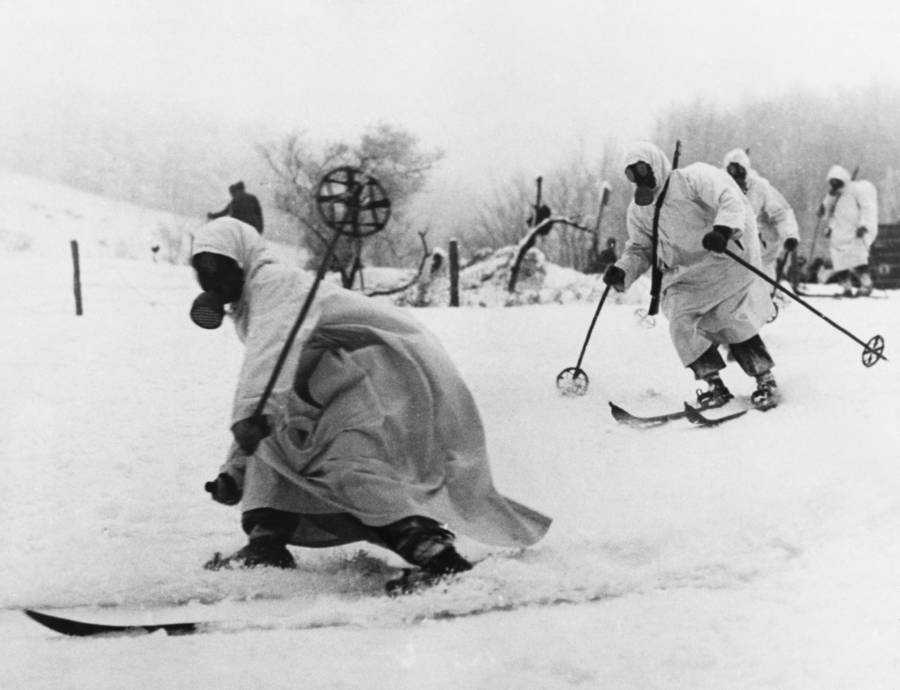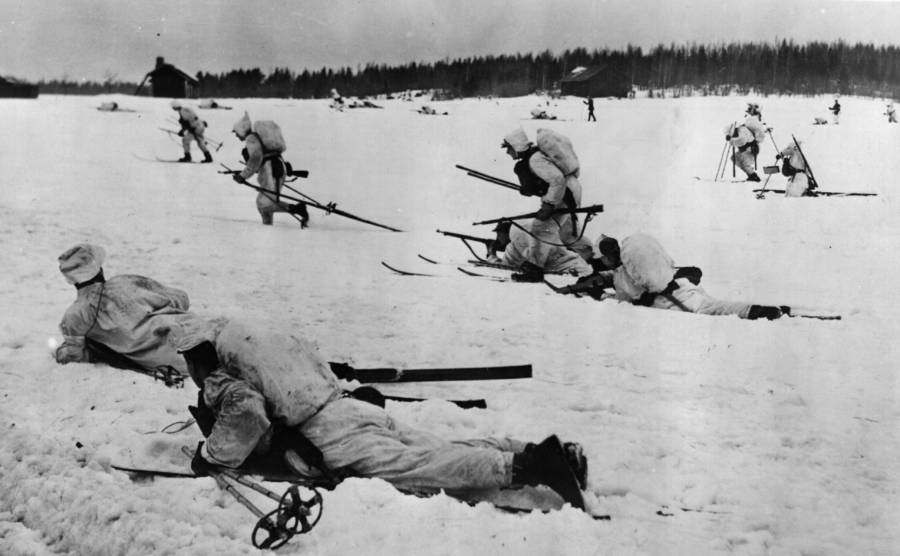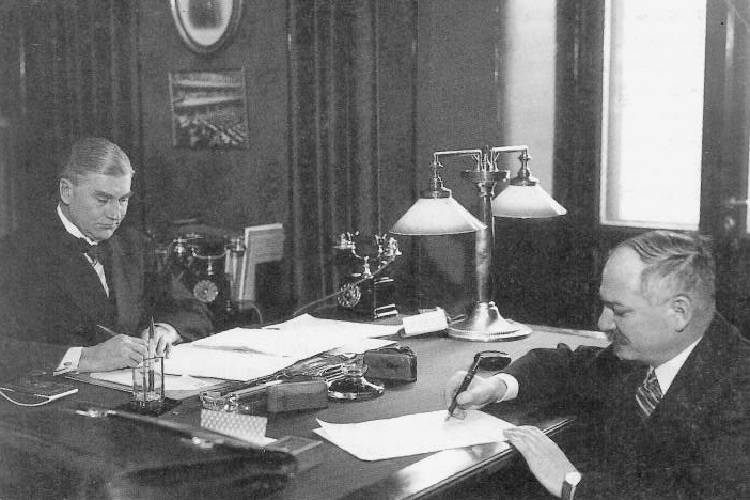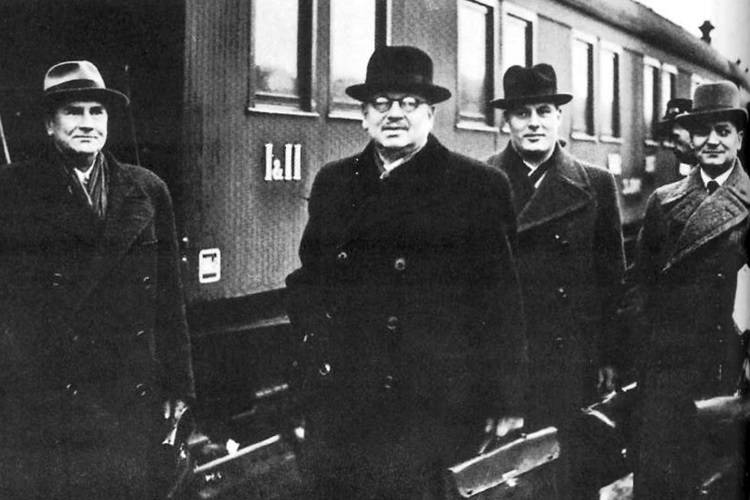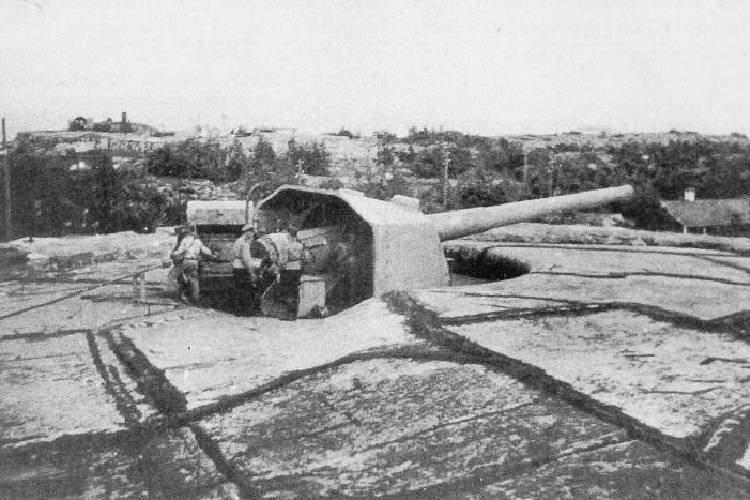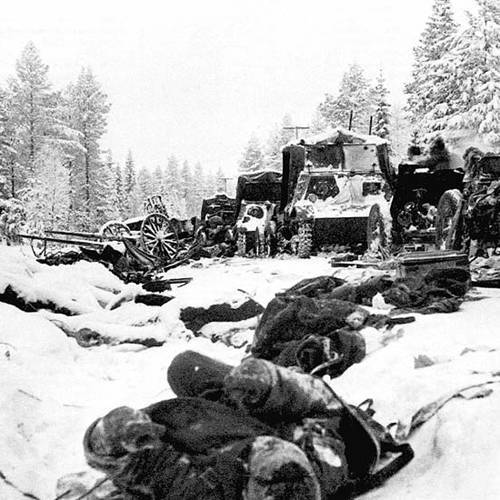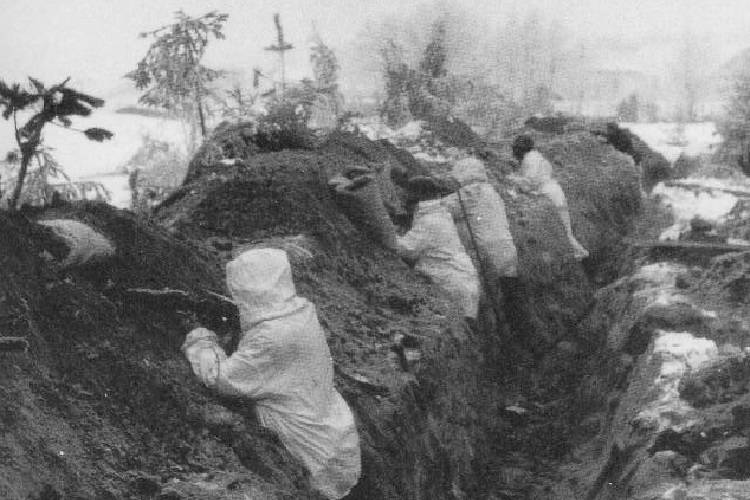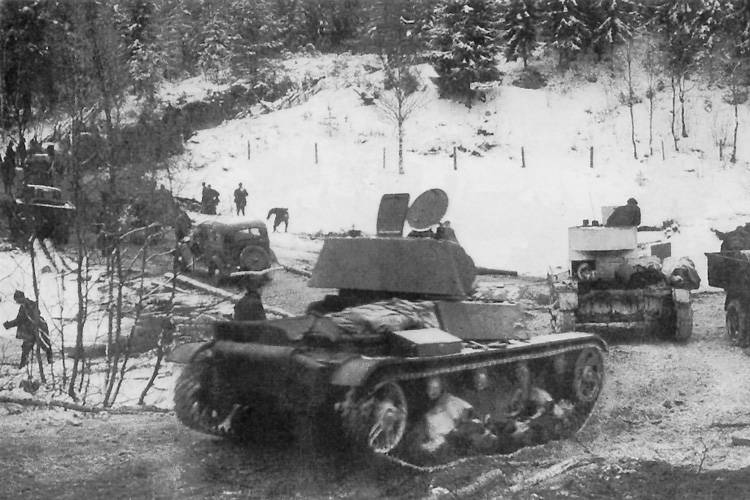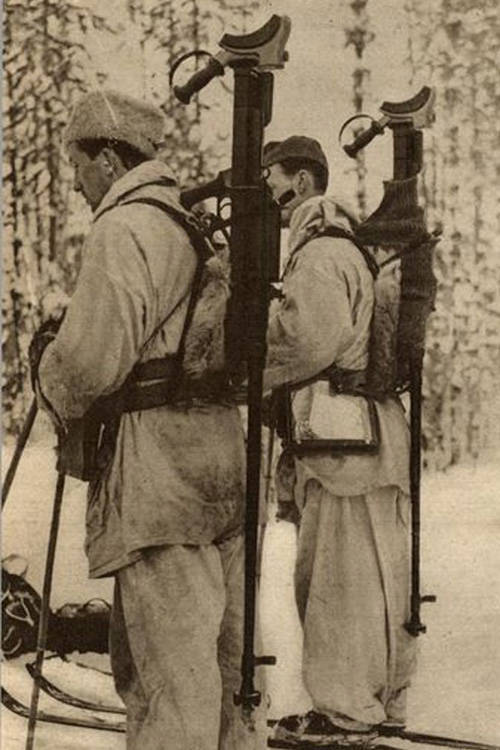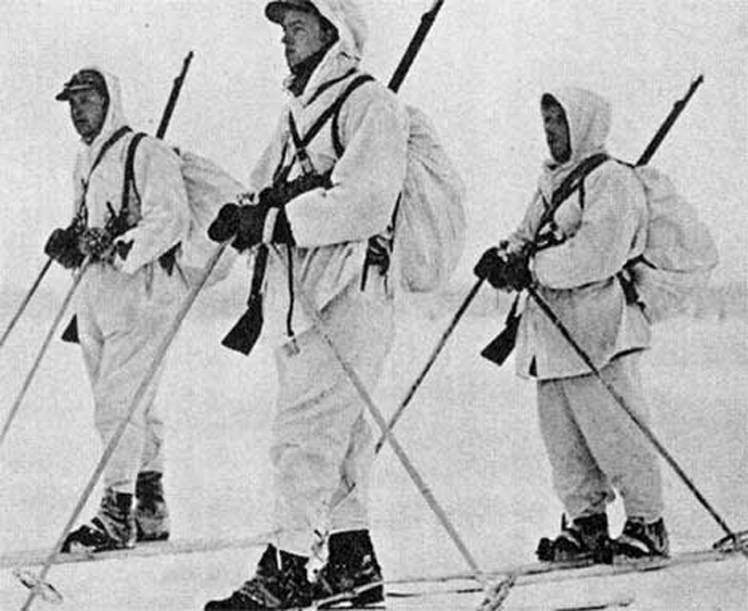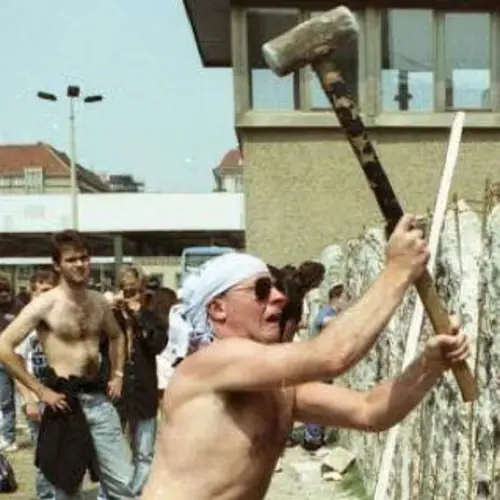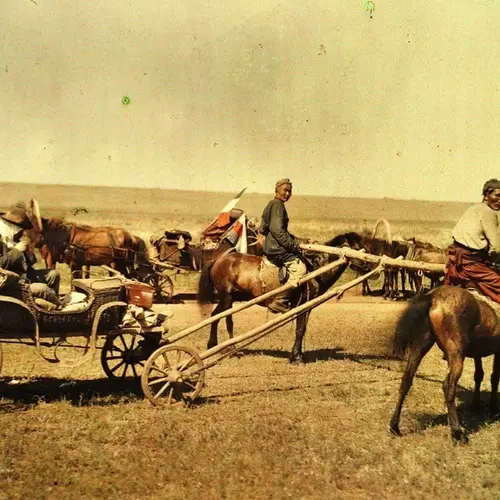In November 1939, the Red Army invaded Finland for what they thought would be a quick and easy territory grab, but the heavily outnumbered Finns held them off for three months in what became known as the Winter War.
While few in the West even remember its name, the Winter War launched a chain of events that just might have brought down Hitler, handed the Allies victory during World War II, and thus shaped the last 75 years of world history.
It was 1938, and the Soviet Union sought to bolster the city of Leningrad from a possible German attack on the eve of World War II. But there was one little thing that prevented them from creating a wide buffer around the city: the country of Finland.
To solve this dilemma, the U.S.S.R. demanded the chunk of Finnish territory along the Gulf of Finland that came closest to Leningrad. Moreover, the Soviets sought to ultimately conquer all of Finland and install a puppet government.
However, committed to neutrality, Finland refused to cede any land. Negotiations continued through 1938, but then, in 1939, an "unknown party" bombed a Soviet village near the border — and the Winter War began.
The Prelude To The Russo-Finnish War
Leading up to the Second World War, tensions between Finland and the Soviet Union had already been simmering for years. Soviet leadership harbored concerns about Finland's proximity to Leningrad, fearing that it could serve as a potential route for enemy attacks. Finland was likewise wary of Soviet expansionist ambitions — anxieties that were only heightened after the signing of the Molotov-Ribbentrop Pact, or the Treaty of Non-Aggression between Germany and the U.S.S.R., in August 1939.
As the name suggests, the pact was an agreement between the Soviet Union and Nazi Germany to avoid fighting. It also secretly divided Eastern Europe into smaller spheres of influence, with Finland falling within the Soviet sphere. Naturally, this made the small country even more cautious of the U.S.S.R.
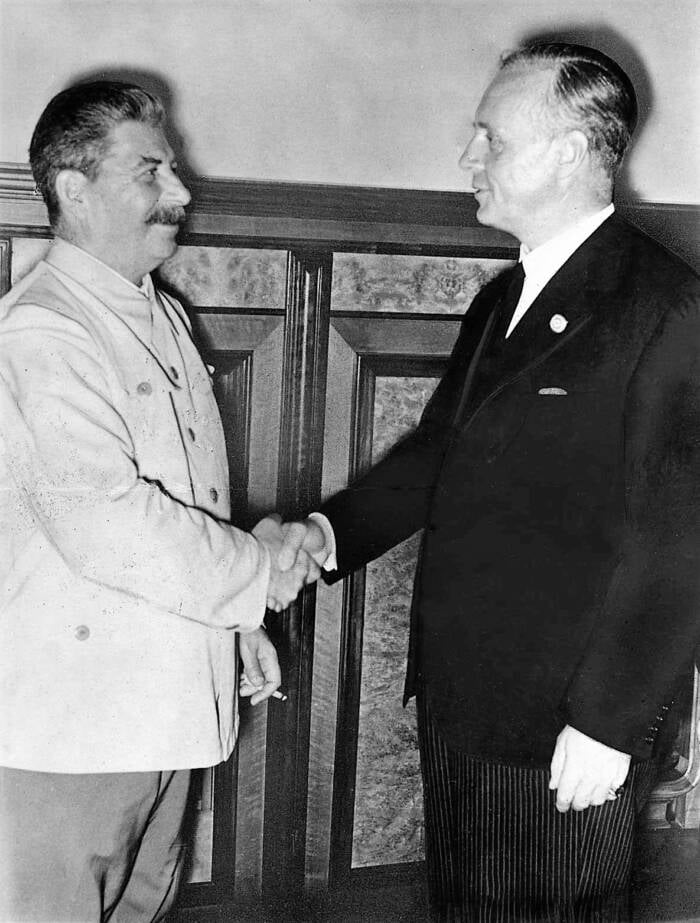
Public DomainSoviet leader Joseph Stalin and Joachim von Ribbentrop, the Minister of Foreign Affairs in Nazi Germany.
Just two months later, in October, the Soviet Union initiated negotiations with Finland, demanding territorial concessions, including parts of the Karelian Isthmus and islands in the Gulf of Finland, citing security concerns for Leningrad. Finland refused these demands.
Things escalated when, on Nov. 26, 1939, the Soviets claimed that Finnish artillery had shelled the village of Mainila, resulting in casualties. At the time, it was unclear what had actually happened, but later research suggested that the incident was likely orchestrated by the Soviets themselves to create a pretext for war. And it worked.
Finnish Defense And Tactics Caused Significant Problems For The Soviets
Following the artillery strike in Mainila, Vyacheslav Molotov, the Soviet Foreign Minister, claimed that Finland was responsible and demanded an apology. When Finland denied any involvement and ordered a joint Finnish–Soviet commission to look into the matter, Molotov deemed their response hostile.
The U.S.S.R. then severed its non-aggression pact with Finland. The Winter War began four days later.
Soviet leader Joseph Stalin was sure that the conflict would be resolved within just two weeks. However, weakened by the dictator's removal of officers during the Great Purge of 1936, the Soviet army lacked leadership and strength.
What's more, the U.S.S.R. also greatly underestimated their enemy. What the Finnish army lacked in weapons (30 times fewer aircraft than the Soviets and 100 times fewer tanks) and manpower (fewer than half as many soldiers), they made up for in heart and morale.
Finland's troops also had the advantage of being very familiar with the terrain that they were defending. For starters, it was very snowy and very cold. Finnish soldiers, adept at skiing, utilized guerrilla tactics by launching surprise attacks and ambushes against the cumbersome Soviet formations. Having appropriate clothing for the conditions also gave the Finns an advantage over the ill-prepared Soviets, thousands of whom died of frostbite.
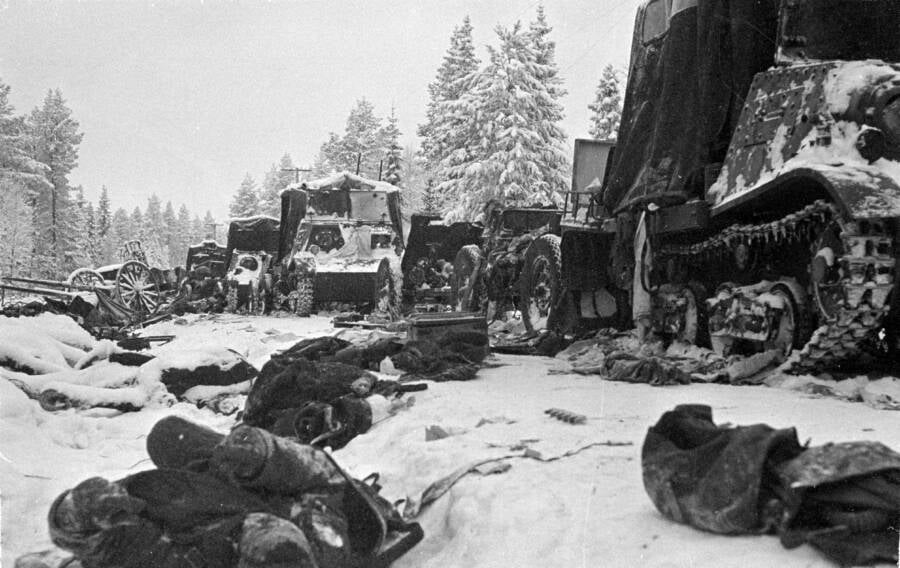
Public DomainDead Soviet soldiers after a Finnish ambush.
One of the most effective Finnish strategies was the "motti" tactic. This involved using the dense forests and narrow roads to their advantage by cutting off Soviet convoys, typically by felling trees to block escape routes. Once isolated, these pockets of soldiers, referred to as "mottis" (a term for a bundle of firewood), were encircled and subjected to continuous harassment through ambushes and raids. This approach not only disrupted Soviet supply lines but also inflicted significant casualties and sapped the morale of the trapped troops.
Given such conditions, the Winter War lasted 14 weeks instead of Stalin's predicted two. The Red Army's casualties were substantial, and even more than their ranks, it was their reputation that suffered some humiliating setbacks after failing to quickly dominate an opponent with far fewer soldiers. In fact, during the first month of the war, it seemed as if Finland would emerge victorious.
Major Battles Of The Winter War
The Battle of Tolvajärvi was the first significant offensive victory for Finnish forces during the Winter War.
In early December 1939, Soviet forces advanced towards Tolvajärvi, threatening to outflank Finnish positions. Recognizing the strategic importance of the area, Finnish Commander-in-Chief Field Marshal Mannerheim appointed Colonel Paavo Talvela to lead a counteroffensive.
On Dec. 12, Finnish forces launched a surprise attack on the Soviet 139th Rifle Division. The plan involved a pincer movement aimed at encircling the Soviet forces. Despite facing challenges, including harsh winter conditions and a much smaller fighting force, the Finnish troops executed the maneuver effectively. The Soviets, caught off guard, suffered heavy casualties, and the remnants of their forces retreated in disarray. This victory halted the Soviet advance in the region and demonstrated the effectiveness of Finnish offensive operations.
The extended Battle of Suomussalmi, which lasted from Nov. 30, 1939, to Jan. 8, 1940, was also a decisive win for Finnish troops. The Soviet 163rd Rifle Division had advanced into Finland with the objective of capturing the town of Suomussalmi and subsequently cutting Finland in half by reaching the Gulf of Bothnia. Initially, the Soviets occupied Suomussalmi with minimal resistance, as Finnish forces had conducted a strategic withdrawal.
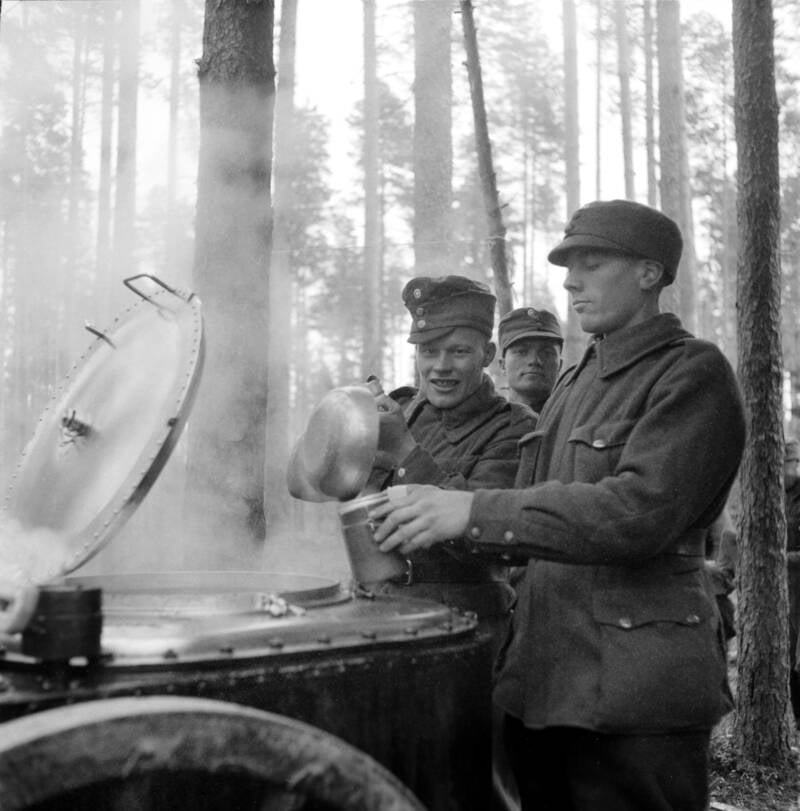
Public DomainFinnish soldiers preparing breakfast in October 1939 while training for a potential invasion.
However, the Finnish 9th Division, under Colonel Hjalmar Siilasvuo, launched a series of counterattacks aimed at isolating and encircling the Soviet forces. Through a combination of their skiing ability, knowledge of the forested terrain, and guerrilla tactics, they managed to sever Soviet supply lines and isolate units, resulting in significant Soviet casualties and the seizure of military equipment, including tanks, field guns, and trucks.
Another prolonged battle, the Battle of Kollaa, also proved just how adept the Finnish forces were. The Soviet 56th Rifle Division aimed to break through Finnish defenses along the Kollaa River to advance into central Finland.
Finnish forces, though significantly outnumbered, established defensive positions along the river, utilizing the challenging terrain to their advantage. The battle commenced with Soviet forces launching repeated assaults, often supported by artillery and armor. Despite the intensity of these attacks, however, Finnish defenders held their ground, employing effective small-unit tactics and leveraging their familiarity with the environment.
In the wake of the battle, the phrase "Kollaa kestää" ("Kollaa will hold") became a symbol of Finnish determination. The battle also produced a legendary fighter among the Finnish ranks: Simo Häyhä.
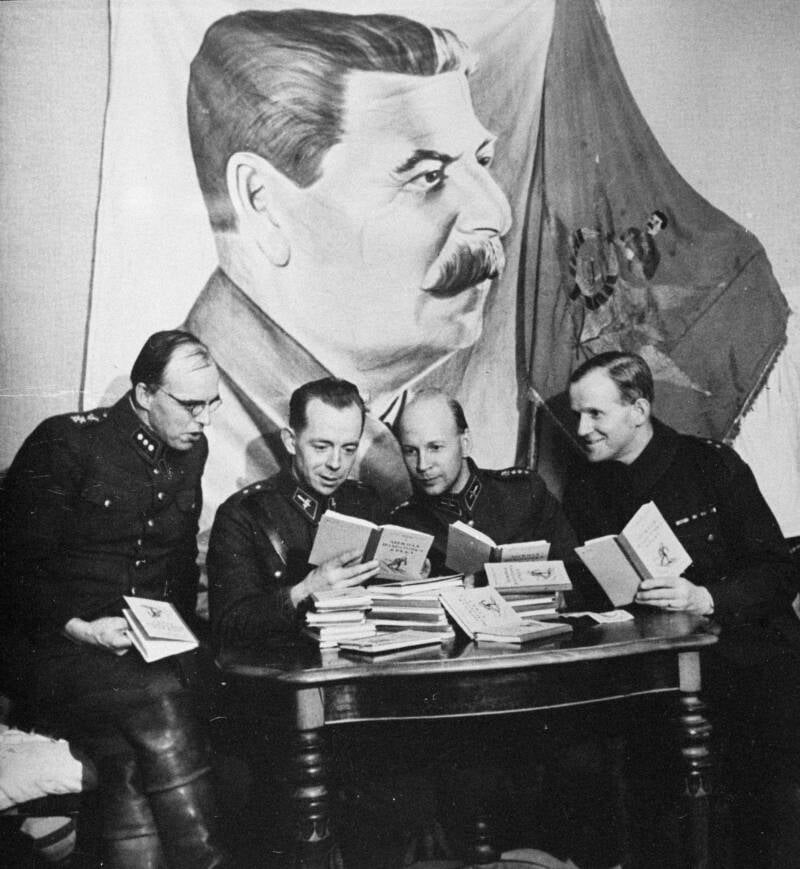
Public DomainFinnish soldiers inspecting Soviet skiing manuals seized during the Battle of Suomussalmi.
Häyhä was an experienced hunter and marksman prior to the war, but when the fighting commenced, his skills earned him the nickname "White Death." Serving under Lieutenant Aarne Juutilainen in the 6th Company of Infantry Regiment 34 during the Battle of Kollaa, he utilized his exceptional shooting skills to deadly effect.
Preferring iron sights over telescopic ones to maintain a lower profile and avoid the risk of lens glare revealing his position, Häyhä would arrive at his carefully selected sniping spots before dawn, often constructing a compacted snow embankment to provide cover and reduce muzzle flash. He also kept snow in his mouth to prevent his breath from giving away his position in the freezing air. With over 500 confirmed kills during the war, Häyhä is considered one of the most prolific snipers in history.
Nevertheless, the Soviets did prevail, taking the territory they sought on March 5, 1940. Their sheer numbers made it all but impossible for the Finnish troops to oppose them, and, as the National World War II Museum acknowledges, the tactics used by new Soviet commander General Semyon K. Timoshenko turned the tide in the Soviet Union's favor.
Soviet Victory And The Aftermath Of The Winter War
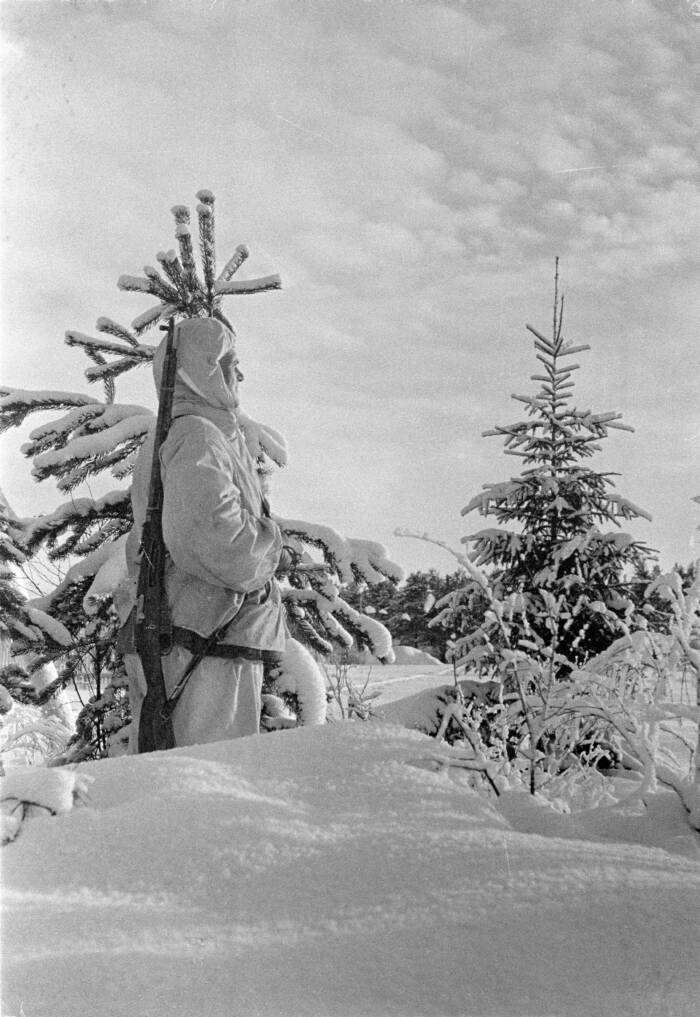
Public DomainDespite their great tactics and environmental advantage, Finnish forces were outnumbered and ultimately ceded victory to the Soviet Union.
Facing what was soon to be a clear victory for the Soviets, the Finns then immediately proposed an armistice — but the U.S.S.R. declined. Instead, the Soviets kept the pressure on as they made further territorial demands of the Finns.
Finally, on March 12, 1940, the Finns had little choice but to accept the Soviets' new terms and sign the Moscow Peace Treaty. Ultimately, Finland lost 11 percent of its land and a sizable chunk of its economic strength. Even with volunteer soldiers from other countries and most of the world on its side, Finland lost the Winter War.
However, the consequences for the U.S.S.R. may have been even worse. Based in part on the surprising amount of trouble that the weakened Soviets had with the small Finnish force, Adolf Hitler decided to break his own non-aggression pact with the Soviets and invade the U.S.S.R. in June 1941.
It's this decision, many scholars claim, that brought the downfall of the Third Reich and victory for the Allies in Europe.
After this look at the Winter War, see some of the most powerful World War II photos ever taken. Then, discover the most pervasive World War II myths that we all need to stop spreading.
